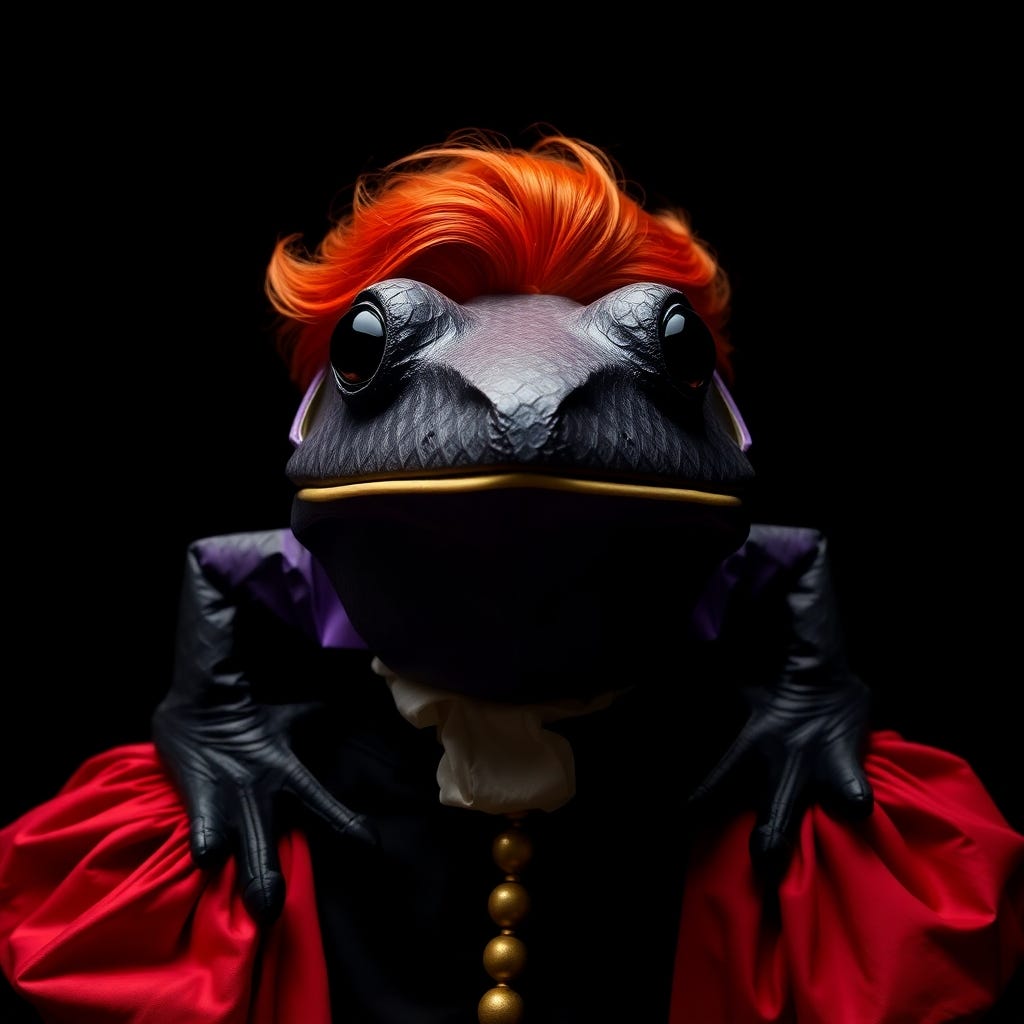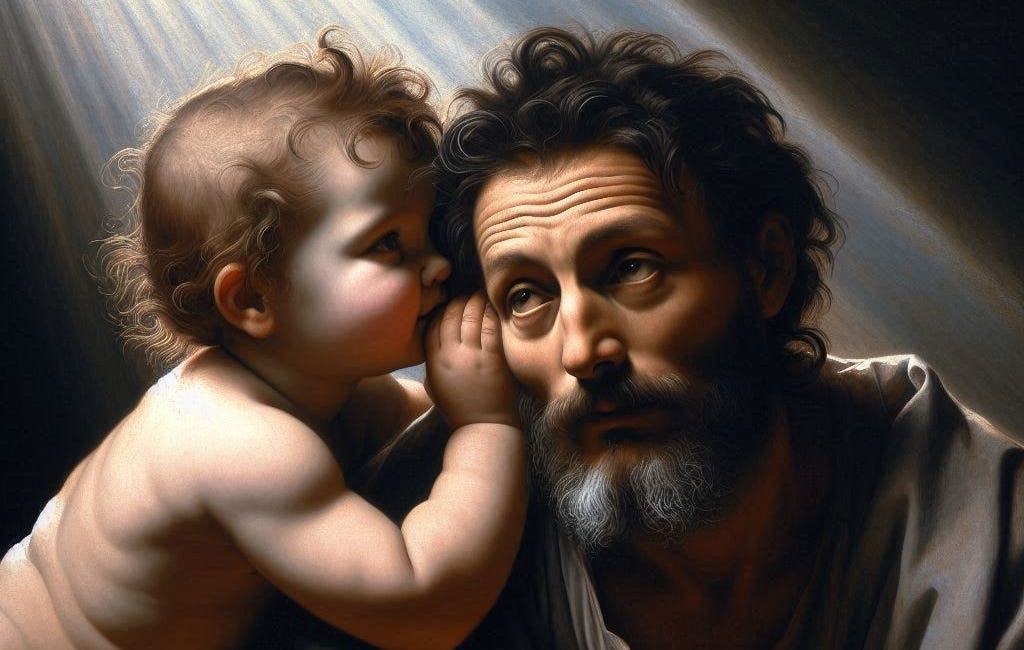Vivaldi's Vision in Naples: My Short Story
In 18th century Naples, a strange encounter unlocks a new era of sound
Fascinated by the figure of Antonio Vivaldi and in love with the vibrant atmosphere of Naples, I have woven together reality and fiction in this story. I imagined an extraordinary encounter, an unexpected inspiration that could shake the genius of the Red Priest, transporting him into an unexplored sound universe. I hope this foray between history and imagination will captivate you as much as it captivated me to write it. Enjoy the reading.
Vivaldi's Vision
Naples, 1725. The year when Antonio Vivaldi, fresh from his Venetian triumphs and Vienna commissions, was invited by Marquis Giuseppe Zurlo for a series of compositions for the San Bartolomeo Theater. The city was bubbling with music, intrigue, and voices intertwined in the narrow alleys of Spaccanapoli.
Vivaldi lived in a second-floor apartment in Palazzo Sangro di Casacalenda, in the heart of the ancient centre. His bedroom overlooked an inner courtyard, where the ticking of instruments and musicians' rehearsals overlapped with merchants' voices. The Red Priest - as they called him for his flaming red hair - was thirty-six years old, had an international reputation, and a thirst for sounds never heard before.
The first lights of dawn always found him in motion. That morning in late April, as Naples awakened in fragments, Vivaldi descended toward the Largo di Palazzo, in front of the Royal Palace. It was an open, irregular space that told centuries of history through worn stones, among nobles in carriages, merchants with sweaty faces, and citizens beginning their day.
The breath came before the sound.
A breath so deep it seemed like a tectonic movement, a vibration that didn't belong to the world of living beings. Frequencies so low they weren't immediately perceptible but felt in the bones, teeth, and the body's most hidden fibres. A tremor ran through the cobblestones, a subtle shift in the air. The ground beneath Vivaldi’s feet seemed to pulse, a slow, rhythmic thrumming that resonated deep within him. It was a sensation unlike any he had ever experienced, a primal vibration that spoke of something ancient and powerful. Then, as if the earth itself had exhaled, the form materialized. The frog was purple.
Not a pastel or shaded purple, but a primordial purple, a purple that seemed extracted from the earth's bowels. As large as a palace, straight as a statue, motionless yet alive. When they opened, its eyes were two opaque spheres containing millennia of sleep.
Its skin was rough, and scaly, with a texture reminiscent of ancient tree bark. Deep furrows crossed its epidermis as if each fold told a geological story. And from its mouth - immense and wet - drool slid, dripping all around, liquid and extremely dense, while it accumulated everywhere, transforming the Largo di Palazzo into a viscous expanse that stretched to the edges, where nobles and merchants walked unaware, their steps sucked in by that primordial substance.
An enormous belly swelled its abdomen, an accumulation of mass that defied all anatomical logic.
But it was the breath that generated the sound.
Each inhalation and exhalation of the creature produced frequencies so low they seemed like a forgotten dialect, a language preceding music, words, and sounds. A hum that sucked in the air, compressed it, deformed it into primordial oscillations.
Vivaldi was the only one who could see it.
The cart drivers crossing the Largo at dawn, the monks from the nearby monastery, the first street vendors - all blind to that impossible creature. Only the musician. Only him.
During the day, the frog disappeared.
At dawn, it reappeared, immense, with that breath generating unheard frequencies. Vivaldi began to follow a rhythm: every morning, before Naples fully awakened, he returned to that square, observed, and listened.
He decided to involve a Neapolitan mechanical artisan, an expert in musical instruments—a certain Domenico Cirillo, a master harpsichord builder with a secret passion for more complex mechanisms. He dragged him to the next dawn. "Listen!" Vivaldi shouted. But the man couldn't. Nothing. Sonic void.
Then, he gathered the best Neapolitan tenors and arranged them around the sleeping frog, like a human crown of sound. They forced Cirillo to listen to that geography of frequencies that no one perceived.
That's when the true revolution began.
The Purple Frogs took shape in Naples' most secret workshops. Gigantic wooden cases, built with surgical precision defied imagination. Cirillo had understood the mystery. These weren't simple instruments, but living sound machines.
Each Purple Frog was a masterpiece of musical engineering. Built with walnut wood aged for at least twenty years, with six-centimetre-thick boards, treated with essential oils of lavender and rosemary to ensure perfect resonance. The internal mechanisms were a symphony of precision: ultra-thin goat skin membranes, treated with a secret mixture of resins and Carrara marble powder, mounted on a system of levers and counterweights reminiscent of the most complex Swiss watches.
The bass. The bass was everything.
Membranes of unprecedented sensitivity, capable of reproducing frequencies that traversed the human body like a primordial wind. Cirillo had studied Leonardo's anatomical drawings, consulted the treatises of the greatest mathematicians of the time, and spent entire nights studying the geometry of sounds.
The Purple Frogs measured three meters in height and two in width. It was painted in a purple that seemed extracted directly from the earth's bowels. They were no longer instruments. They were creatures.
The concerts became sonic apocalypses.
Audiences no longer listened. They were sucked into the sound. Nobles fainted, peasant women screamed in ecstasy, and children froze like salt statues. Chandeliers oscillated, and buildings seemed to breathe with those underground frequencies.
Naples was the first to be overwhelmed. Then Vienna. Then Venice. Then all of Europe.
In concerts, the Purple Frogs were strategically arranged. Not in orderly rows, but according to complex mathematical calculations that Cirillo had developed. Three on the right, two on the left, and one in the centre. Like sonic temples, like altars of an acoustic religion never existed before.
When Vivaldi began his "Four Seasons," something indescribable happened. Sounds no longer came from the instruments. They exploded from within the listeners. Frequencies that shattered perception, that reconstructed reality in new sonic geometries.
In the last, sad days of his life, Antonio Vivaldi found himself in a hotel room in Vienna, far from his beloved Venice. Poverty, a faithful companion in his final years, had led him to this cold and inhospitable city.
The hotel room, a plaster coffin, pulsed with its own life. The walls, thin as drum membranes, trembled, and the wallpaper, a macabre dance of shadows, writhed in an infernal ballet.
Death, a shapeless and slimy creature, approached, but not with an icy embrace. No, Vivaldi's death was an orgasm of sounds, a triumph of dissonances.
A purple frog, an abominable and sublime creature, emerged from his delirium. It was the same frog he had seen years before in Naples, gigantic, at Largo di Palazzo, a vision that had obsessed him since then. Its eyes, two cosmic abysses, were full of music never composed, of notes still waiting to be written. Its skin, a stellar map of luminescent scars, pulsed to the rhythm of a heart that didn't belong to this world.
The frog didn't touch Vivaldi but enveloped him in a primordial vibration, a sound that was Naples, in its crudest and most sublime essence. It was chaos and order, sacred and profane, heaven and hell, all together, in a single, sublime disorder.
Vivaldi felt his music disintegrating and recomposing in a kaleidoscope of sounds. The Four Seasons, an infinite cycle, condensed into a single, eternal instant.
The room transformed into a baroque theatre, with wallpaper rising to form a curtain revealing an infinite stage.
With a last, desperate breath, Vivaldi opened his mouth, a black abyss from which emerged a scream that was a hymn, a lament, a prayer. A sound that was the very essence of music, pure and uncontaminated.
The purple frog swallowed him. Not in the carnal sense. But in the musical sense. As one swallows an aria, a theme, an ecstasy.
And Vivaldi disappeared. Inside that creature. Inside that vibration. Inside Naples.
Feel free to leave a comment.
Christ Child Whispering to Caravaggio's Ear
I wrote this fictional story inspired by the eternal principle "As in Heaven, so on Earth," weaving together the divine and the material, peaks of art with Neapolitan folk wisdom. The story takes place in 1607 when Caravaggio painted "The Seven Works of Mercy" for the Pio Monte de…
I have woven tales for anyone who cares to read them. My books await you on Google Books. Check also my stories on Medium.com.
I am eager to participate in research and produce content on Cross-Cultural Philosophy. Considering the many philosophy professors following Learn Vedanta Substack from universities across the five continents, I would be truly honoured to be involved in projects, as I have been recently approached. Please feel free to contact me.
I would be honoured if you considered subscribing to the Premium Contents of my Vedanta Substack and leaving feedback, comments, and suggestions on this page and by writing to me at cosmicdancerpodcast@gmail.com.
GIFT A LEARN VEDANTA SUBSTACK SUBSCRIPTION.
Thanks for reading.






